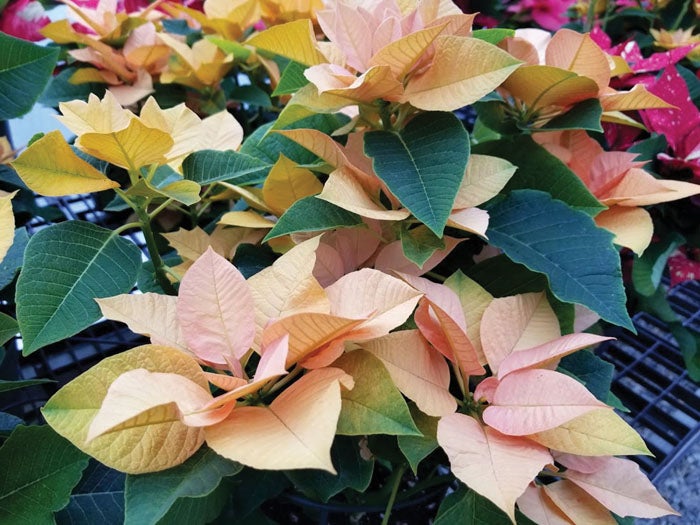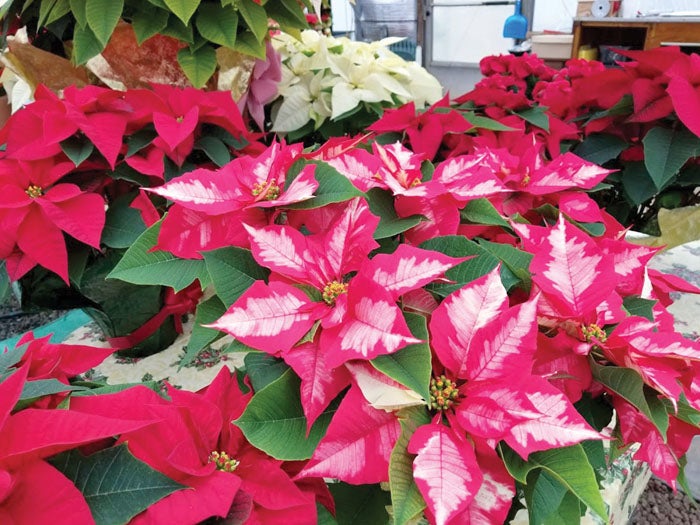Poinsettias, a favorite holiday flower, and their care
Published 12:00 am Friday, December 15, 2017
Poinsettias are a natural at this time of year. Sparked by an early snow, Rowan County is truly blessed with commercial poinsettia growers providing beautiful holiday plants.
Growing poinsettias is a laborious five-month process starting from cuttings. Some growers begin the process with small cuttings taken in July from stock plants they’ve grown in greenhouses while others receive shipments of cuttings from as far away as Guatemala and El Salvador.
Poinsettias are a great bargain considering the amount of time and care necessary to produce these showy plants. And the Christmas season is just not the same without a poinsettia. Local producers have produced another outstanding crop this season.
Poinsettias are photoperiodic plants, responding to waning day lengths. The chlorophyll or green color pigments gradually disappear, revealing other distinctive color pigments as a result of waning daylight hours in early September.
Color appears in the bracts or modified leaves beginning in early October. The actual flowers are small, yellow clusters in the center of the bract whirl. Many often confuse the bracts, or colorful leaves, as the plant’s flowers.
There are various colors and combinations available, and actually too many to list. Red is the predominant poinsettia color produced, however, there are a virtual rainbow of colors ranging from deep purples to creamy whites. There’s even an orange poinsettia variety.
Commercial producers began their shipment of the colorful holiday plants in early November to local garden centers and retail outlets, but there are still beautiful plants available from local Rowan County producers.
With proper care, poinsettias can last throughout the holiday season. Below are tips from poinsettia growers on how to keep your plant looking its best for the holidays.
• Try to use a large, roomy shopping bag or box to protect your plant when transporting it. Most growers will have plastic sleeves to protect the plant.
• Place your plant in indirect sunlight for at least six hours per day. If direct sun can’t be avoided, diffuse the light with a shade or sheer curtain.
• Maintain the room temperatures between 68-70 degrees. If you are comfortable, so is your poinsettia, however, the cooler the better.
• Try not to expose poinsettias to temperatures below 50. These plants are sensitive to cold, so avoid placing them outside during the winter months.
• Avoid placing plants near cold drafts or excessive heat. Also, avoid placing near appliances, televisions, fireplaces or ventilating ducts.
• Water your plant when the soil feels dry to the touch. Please note that over-watering quickly kills poinsettias. Do not allow them to sit in standing water. Always remove a plant from any decorative container before watering, and allow the water to drain completely.
• Poinsettias are produced as disposable plants and should be tossed when they decline after the holiday season.
• Poinsettias are not poisonous plants as many think. This is a myth perpetuated in the early 1900s that has remained with us to this very day. Display and enjoy your traditional Christmas plant throughout the holidays without fear of pets or children becoming ill from ingesting plant material.
Darrell Blackwelder retired as county Extension director with the North Carolina Cooperative Extension Service in Rowan County.








